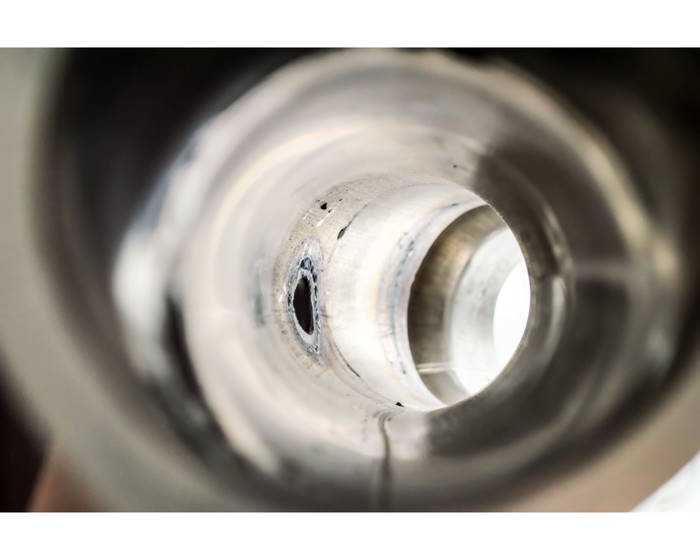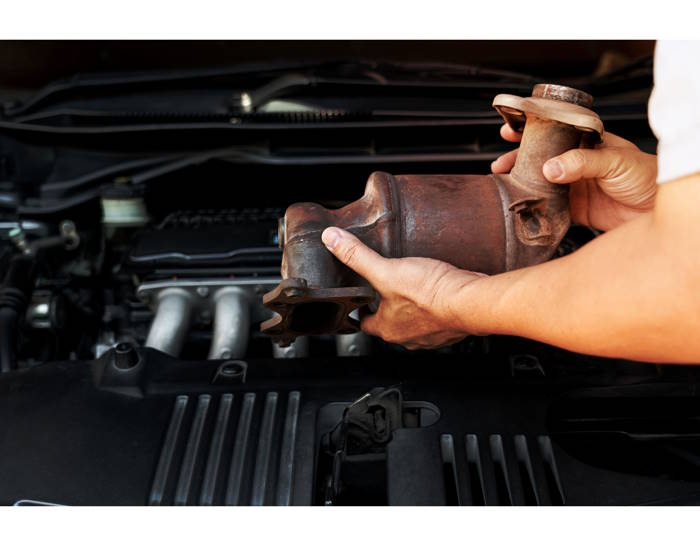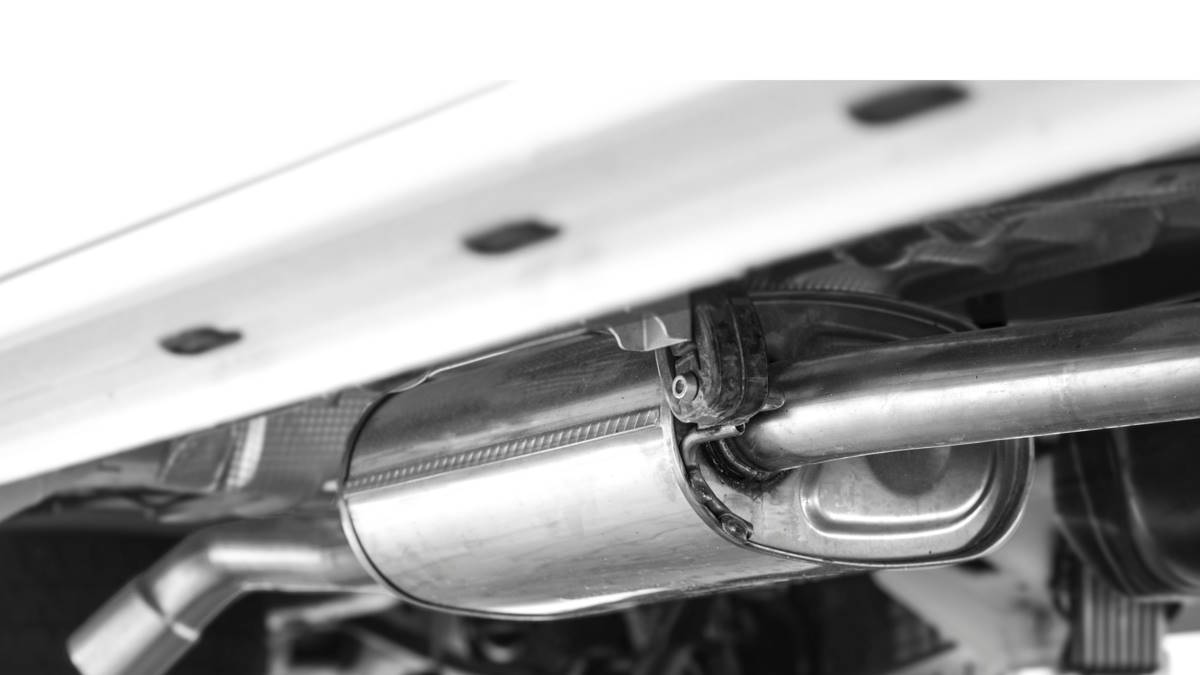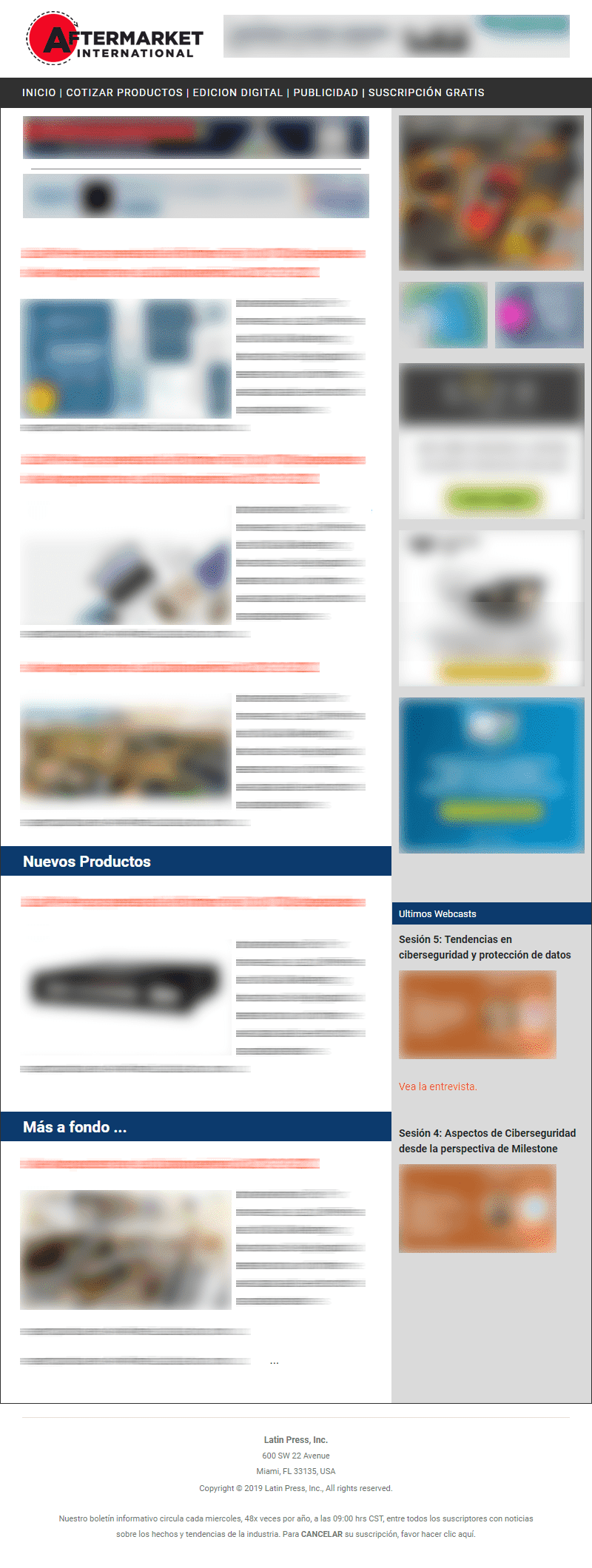As part of the car's exhaust system, this device transforms the hydrocarbons found in the combustion gases into water and carbon dioxide.
The onset of the pandemic brought with it a truce with the planet. The decrease in traffic in the first months of mobility restrictions allowed the massive reduction of pollutants associated with internal combustion engines.
More specifically, after the first year of lockdown measures, global average road activity fell by 50% compared to 2019, according to the International Energy Agency. A more than valuable environmental contribution knowing that the burning of fossil fuels represents almost a quarter of CO2 emissions from human activities.
However, as more than one analyst predicted, as soon as the green light was given for the current transit of all types of vehicles, the levels of atmospheric concentrations of CO2 also recovered their current rhythm, and even faster.
Faced with this, one of the key pieces to control and reduce the polluting emissions of each vehicle are the catalytic converters. As stated by Don Davis, national manager of sales and marketing for Davico, a full-line catalytic converter manufacturer, this part is part of the vehicle's exhaust system designed to clean and convert harmful pollutants from engine exhaust into less harmful gases before they leave the car's exhaust system.

"Inside a catalytic converter, exhaust gases flow through a dense honeycomb structure made of ceramic and coated with catalysts. The catalytic converter is not just a simple filter, it actually changes the chemical composition of the exhaust gases by rearranging the atoms from which they were made," explains Don Davis.
A piece in the exhaust line
Although the patent of the catalyst dates from 1952, only in the 70s did most gasoline vehicles incorporate it. Before it was developed, harmful waste gases produced by the car's engine exited directly from the exhaust pipe into the atmosphere.
In 1975, three years after the First Climate Summit in Stockholm (Sweden), American vehicle manufacturers introduced catalysts in accordance with the US Clean Air Plan required by the Environmental Protection Agency (EPA). It required all vehicles to reduce their emissions by 75% over the next five years.
In 1984, German law required the exhaust line of gasoline-based cars to incorporate a catalytic converter.
The second Earth Summit was held in 1992 in Rio de Janeiro, Brazil. That year, while in Europe the Euro regulations (1988) that oblige to reduce emissions through measures such as the elimination of lead in gasoline and the incorporation of catalysts became more restrictive, Latin American countries such as Mexico would begin their use from two-way catalytic converters; Three years later it would be extended to three-way.
 "Catalytic converters make a significant contribution to air quality and air pollution prevention by significantly decreasing toxic gases emitted into the atmosphere," says Davis, who explains that the emission of these greenhouse gases and other pollutants from car exhaust is harmful to human health and the environment.
"Catalytic converters make a significant contribution to air quality and air pollution prevention by significantly decreasing toxic gases emitted into the atmosphere," says Davis, who explains that the emission of these greenhouse gases and other pollutants from car exhaust is harmful to human health and the environment.
In turn, he brings up some studies that have shown that catalytic converters reduce hydrocarbons by almost 87%, carbon monoxide by 85% and nitrous oxide emissions by 62%.
Currently, both diesel and gasoline vehicles have this component in their internal combustion engine. In this way, harmful gases expelled by the engine such as carbon monoxide and unburned hydrocarbons are oxidized and converted into carbon dioxide and water. In turn, it reduces nitrogen oxides, transforming them into nitrogen.
Possible faults and warning signs
Although this device has a useful life of around ten years, obstructions are possible due to the entry of engine oil or coolant that penetrates the exhaust system and burns out given the high temperatures.
As Davis points out, the converter is just part of a complicated system; There are no moving parts, but they can be easily damaged due to engine misfires, contaminated oil, faulty fuel, overheating, age, vehicle mileage, poor engine maintenance, and more.
"Excess carbon and soot reduces the efficiency of catalytic converters and can negatively affect engine performance and fuel economy," says the Davico professional, who recommends using a professional engine decarbonization treatment every 80,000 or when replacing the converter.
A clear sign of this failure is the loss of power of the car. In addition, there is evidence of a greater amount of smoke from these gases not filtered properly, and the emergence of impurities in gasoline such as sulfur that derives in hydrogen sulfide, which at low concentrations produces an unpleasant odor.
 On the other hand, the low efficiency of the converter at insufficient levels brings with it an alarm signal on the dashboard of the vehicle. To this is added that the floor can heat up to the point of causing a fire inside it.
On the other hand, the low efficiency of the converter at insufficient levels brings with it an alarm signal on the dashboard of the vehicle. To this is added that the floor can heat up to the point of causing a fire inside it.
Given these warnings, the corresponding fault code must be reviewed to change the system, which must have timely maintenance.
To that extent, it is imperative to check the condition of the spark plugs and if they are in poor condition replace them, such as the air and gasoline filter, as well as the engine oil.
The malfunction of the spark plugs leads to the gasoline that enters the cylinder seeping through the exhaust pipe without burning and when entering the catalyst destroys it internally, while an excess of oil also gives rise to the entry of particles that deteriorate it. Metallic noises from the exhaust pipe can warn of this situation.
Valuable materials
The beginning of the pandemic brought with it a counterproductive phenomenon for that effect of preserving the planet. The theft of catalytic converters skyrocketed in countries like the United States, where driving without this tool is illegal. In 2021 alone, theft of this piece increased 12 times more than in 2019, going from 3389 theft reports to more than 52,000, according to the National Insurance Crimes Bureau (NICB).
"Catalytic converters contain three very expensive metals that aid in the chemical reaction process that makes the exhaust pollutants less harmful, which are platinum, palladium and rhodium," Davis says.

This led more than twenty states to introduce regulatory laws, such as the bill introduced in the House of Representatives that among others requires record-keeping for buyers and sellers of converters.
Just from the House, a representative (Republican Jim Baird, from the state of Indiana) argued that the value of converter raw materials increased by four during the pandemic (US $ 1300 per ounce), especially platinum. That is why they are so desired on the black market, where they stop after the tubes to which they are attached are cut.
"Catalytic converters are fairly easy to steal, especially in vehicles that are higher above the ground, such as SUVs and pickup trucks. Thieves can cut a converter in less than 90 seconds!", warns the national manager of Sales and Marketing of Davico (present in AutoAméricas with booth 507).
The authorities suggest that, in case of being a victim of the theft of the catalyst, it is preferable to install a new one so as not to damage other valuable elements of the car.
A bill signed by former Arizona Governor Doug Ducey requires that the purchase record of every catalytic converter be sent to the Arizona Department of Transportation and a unique identification number be issued to deter potential criminals.
To deter the Earth from the effect of internal flue gases, a component such as the catalytic converter is indispensable. For Don Davis, with continued research and development it is likely that these will become even more effective and efficient in reducing pollution.
"Just as important is ongoing education and training for technicians and repair facilities to understand today's sophisticated engine management systems and to accurately diagnose, test and repair any perceived converter-related problems," he said.














